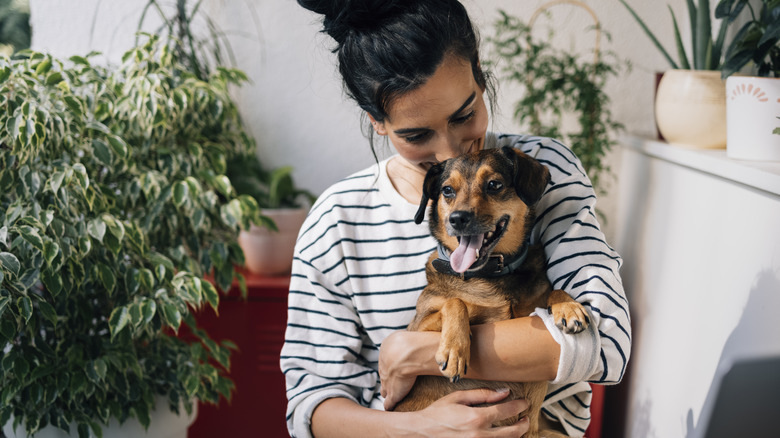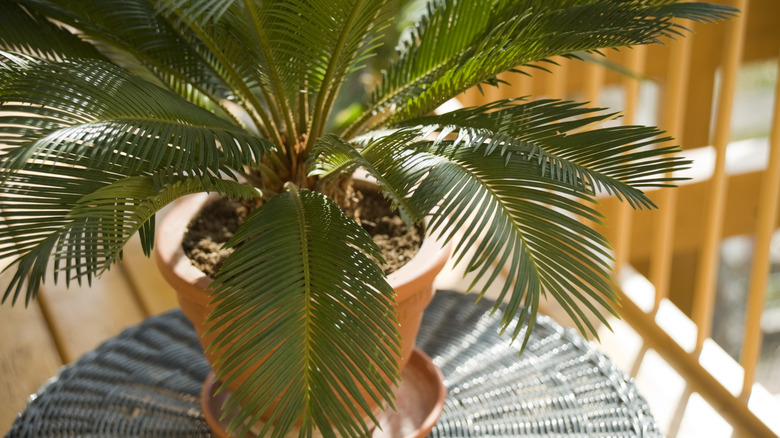The Popular Houseplant Dog Owners Should Avoid At All Costs
There's nothing like a healthy, happy tail wag to warm a dog parent's heart. It's also heartbreaking when a furry friend gets critically ill, especially when some preventative forethought could keep a health disaster at bay. Sometimes, that means keeping an eye on your dog while they're enjoying backyard playtime or making sure they don't ingest any harmful flora while you're out for a walk. But what about indoors? Houseplants are a great way to add some beauty and color to a home, so just about anything you might bring home from a garden center should be okay, right? Not if it's a sago palm (Cycas revoluta); that's one houseplant you'll want to avoid if you have a dog.
While sago palms are often used as landscaping plants in zones 8-11, they've become increasingly popular as houseplants in other areas. They look like palms with frond-shaped spiky leaves, but they're actually cycads, so they are more like cone-producing trees than true palms. When it comes to caring for a sago palm plant, they fall into the low-upkeep category, but dog owners need to be aware that pets are attracted to them, and they're highly poisonous. Every part of the plant holds a toxin called cycasin, from the bark and sap to the roots and leaves, but the sago palm's seeds have more of this dangerous substance hiding within them than any other.
More on sago palm toxicity in dogs
When pets ingest plants that make them ill, their owners often turn to the ASPCA Animal Poison Control Center (APCC) to make sure they get the right type of care in a harrowing situation. The organization reports that if a dog (or another animal) eats any part of a sago palm, there's a 50 percent chance it could result in death. There are a number of indicators of sago palm toxicity that occur quickly after part of the plant is ingested. Vomiting is the first indicator, then dogs can become weak, lose interest in food, develop very loose stools, and may show signs of jaundice since the poisons in these plants readily attack the liver.
The key to survival, according to APCC, is getting a pet needed care as soon as possible after ingestion occurs. If you think your dog has consumed even a small amount of a sago palm plant, call your vet for guidance right away or take it to an emergency veterinary facility immediately. Now that you know the extreme risks involved, it's easier to add sago palms to the list of house plants you should never grow in a home with pets.

